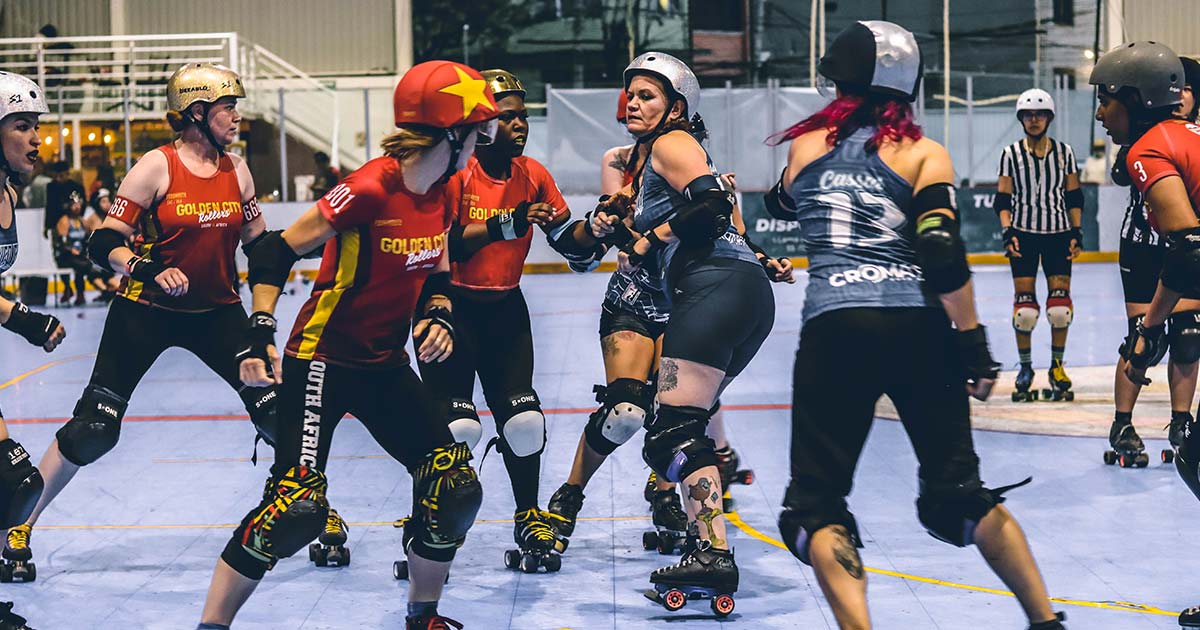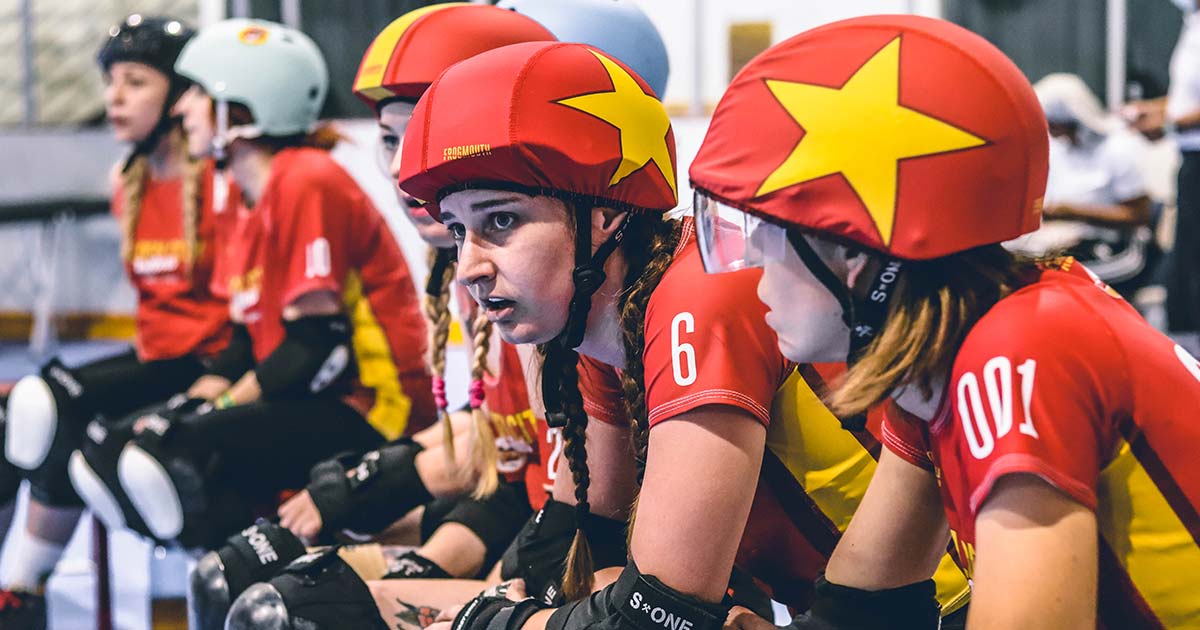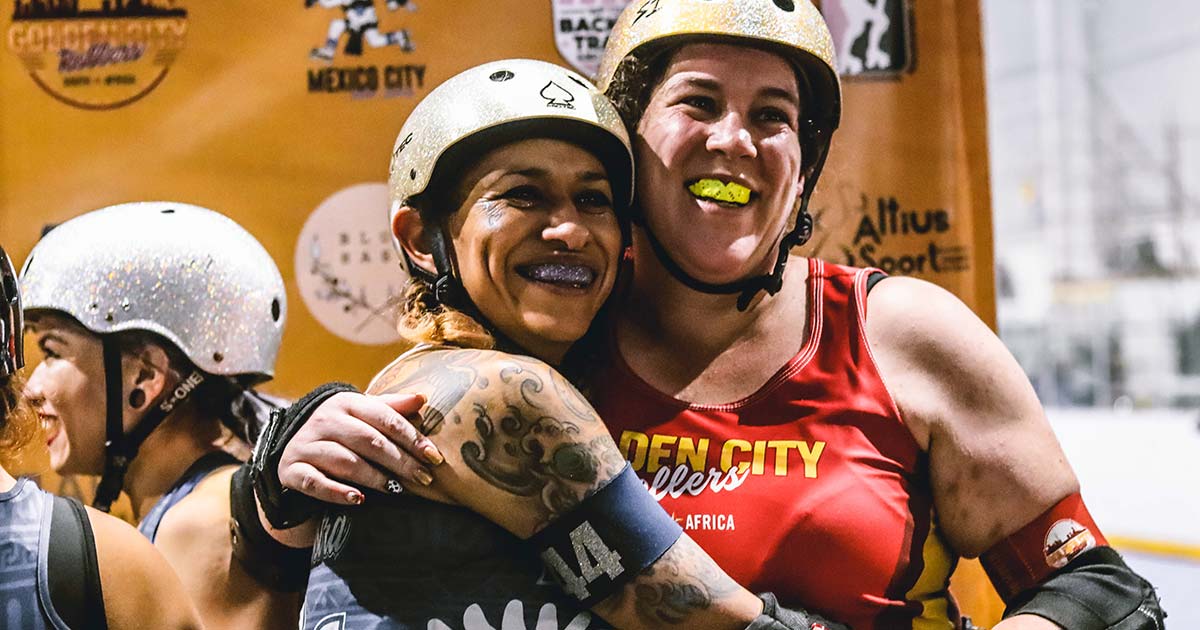First African Roller Derby Team to Achieve International Ranking

Meet Johannesburg’s very own rough and tough roller derby team, Golden City Rollers, who are making a name for themselves internationally. (All photos: Devin Botes)
In June this year, a South African roller derby team will make history by achieving an official international ranking – the first sanctioned ranking of the sport for the African continent.
The team, Johannesburg-based Golden City Rollers (GCR), will play five games against teams from Denmark, the Netherlands, France, and Belgium to cement their ranking with the sport’s global governing body, the Women’s Flat Track Derby Association (WFTDA).
Fluid and brutal in equal measures, roller derby is a full-contact sport played on quad roller skates. It pits nimble ‘jammers’, as point-scorers are called, against powerful defensive ‘blockers’. It’s hard-hitting, action-packed, and one of the world’s fastest-growing women’s sports.
Golden City Rollers (GCR), the traveling team’s eponymous home league, is Johannesburg’s only roller derby league and one of just four such leagues on the African continent. It is the undefeated national champion of the sport in South Africa, having won every National Derby Festival since the inception of this national tournament in 2016.
It also won the first pan-African roller derby tournament against teams from Cairo, Dubai, Cape Town and Durban in March 2020. The league was the first of its kind to be established on the African continent in 2010 and was also the first African member league of the WFTDA.
With a small pool of players, local teams rarely get to test their mettle outside of league scrimmages. Since there aren’t enough African teams to create an African ranking system yet, the team opted to rank in the European region – one of six possible ranking regions worldwide.
Currently, Golden City Rollers has a preliminary estimated ranking of 58th in the European region and the WFTDA requires five sanctioned games in order to verify this ranking.

“At Golden City Rollers, we’re not just a team – we’re a powerhouse of resilience, determination, and South African spirit,” says Dianne Silva, chair of Golden City Rollers roller derby league. “Every move we make on the track breaks boundaries, defies stereotypes, and proves the unstoppable strength of our community.”
Silva explains that, “Achieving a ranking is a dream that has been ten years in the making for our league and we can’t wait to show the world what South African roller derby athletes are made of. Hopefully, this will help create more awareness of the sport in Africa so that, one day, we can rank on home soil too.”
Unlike many sports, roller derby receives no funding from official bodies. The league is currently raising funds to send each of the 15 team members and bench staff to the tournament and has set up a Backabuddy page where the public can help them achieve their goals.
“As roller derby receives no official funding, players have to self-fund their trips at a cost of around R30,000 each. We appeal to anyone who can assist with funds or sponsorship to make a donation on our BackaBuddy page, no matter how big or small, or to reach out to us,” says Silva.

How Roller Derby Works
- The basics: Each team fields five players on an oval track – one jammer and four blockers. The jammer must pass the opposing team’s blockers to score points, receiving one for every blocker passed. Blockers form human walls to halt the opposing jammer’s progress while clearing a path for their own. The hour-long game is divided into two 30-minute halves. Each half is further divided into two-minute periods, or ‘jams’. After every jam, the team can field five new players, with up to fifteen on the bench during the game.
- Positions: Jammers have a star on their helmet. One blocker, called the pivot, will have a stripe on their helmet and can become the jammer during the jam if needed (the original jammer then becomes a blocker). All other blockers have plain helmets.
- Hard hits: Players may not punch, kick, tackle, or trip each other, but can slam into other players using their shoulders, torsos, thighs, and hips.
- Athleticism: Players undergo intensive training before they’re allowed to take part in any sort of competitive play. Most spend at least a year learning to skate, how to give and receive contact, and understand game strategy before they are deemed game ready. Considering the inherent dangers of body slams at high speed on roller skates, safety and proficiency are paramount.
- Alter egos: Though the modern version of the game is very different from the theatrical version of the 1970s, one fun remnant from that time is the interesting player names. Players use word plays to create on-track alter egos like “Dolly Spartan” or “Slamela Anderson”.
For more information about Golden City Rollers, visit their website. You can also support their fundraising campaign here.
Leave a Reply